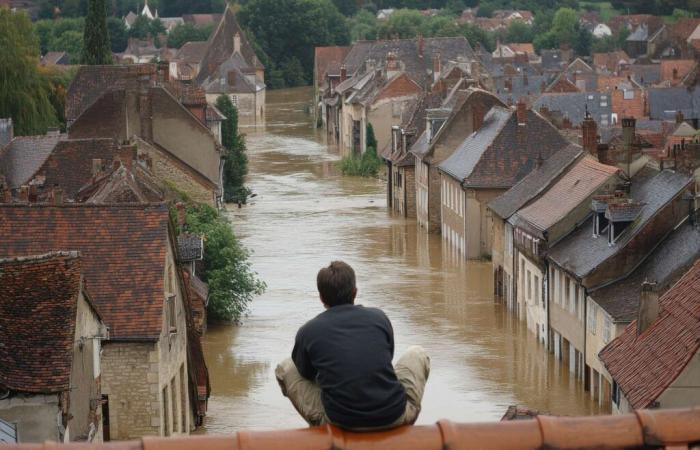
« In France, we managed the question ofsanitationsanitation water, and that’s it », deplores Clément Gaillard. Our cities and our roads were not designed to one day be confronted with risk floods. The way we designed them, but also the materials used, are not adapted to the extreme rainy events that have hit the country for several months. To combat flooding, there is indeed a golden rule: “ everything that falls on a plot must infiltrate the water ».
The priority: rethinking our roads and parking lots
According to the expert, the priority is to work on two elements: roads and parking lots. “ A parking lot is like putting up a huge tarpaulinhe specifies. These surfaces can be de-waterproofed using more porous materials. Then there is a third element, we can also recover water from roofsroofs with tanks, so that this water does not run into the streets. Some cities use draining asphalt, but this is not ideal because it can become clogged. It’s inexpensive, and easy to install. » There are other solutions, but the cost often leads cities to abandon the work.
We can use floods to our advantage
« We also need to take another look at this subject because floods are necessary for groundwater. We see the rain as nuisancenuisancewe only think about evacuating it, even though it is a resource for the soil, the plants, but also for the cooling of cities », explains Clément Gaillard. Little known fact, the evaporation of water consumes a lot of heatheat and helps cool cities: “ we must ensure that cities behave more like a natural environment, like spongy forest soils: part of the water must go down into the water tables, part must remain in the ground, and part will evaporate in case of heat. A liter of evaporating water absorbs 2,400 kilos joulesjoules of heat ».
Countries like Germany and Belgium have succeeded in making their cities more permeable. Berlin is a European example, with more porous surfaces, and massive revegetation of the streets (trees, grass, meadows, wetlands, etc.).)). France is clearly behind, and “ she’s not really improving » according to the specialist, but there is always time to get started. Apart from will, the main obstacle remains the cost of the work. The benefit no longer needs to be proven.





